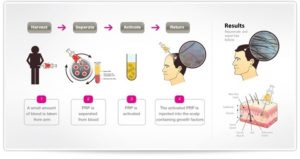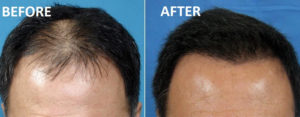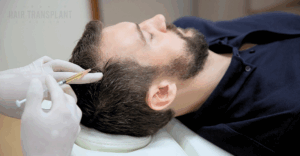 Of course, there are many hair loss solutions in existence. Platelet-Rich Plasma therapy that already promotes healing in injured joints may help restore your lost hair, too.
Of course, there are many hair loss solutions in existence. Platelet-Rich Plasma therapy that already promotes healing in injured joints may help restore your lost hair, too.
About 50 million American men and 30 million women have male- or female-pattern baldness. Of course it can start early in life, but is much more common after the age of 50, when more than 50 percent of men will experience hair loss in one form or another.
A popular and proven treatment, PRP appears to help regrow lost hair. And, there are virtually no side effects from PRP, except for a mild feeling of pressure at the injection site.
The History and use of PRP Injections
Physicians began using PRP therapy about a decade ago to speed up the healing process in damaged joints after injury or surgery.
During the treatment, a technician draws your blood and spins it in a centrifuge to separate out the platelets and plasma. Doctors then inject the plasma, which helps repair blood vessels, promote cell growth and wound healing, and stimulate collagen production.
Doctors began using PRP in dermatology after researchers found that high concentrations of platelets in plasma cells help promote hair growth by prolonging the growing phase of the hair cycle.
Doctors inject plasma into the scalp where hair loss has occurred. They typically administer injections monthly for three months, then spread them out over about three or four months for up to two years. The injection schedule will depend on your genetics, pattern and amount of hair loss, age and hormones.
Platelet-Rich Plasma Treatments are Backed by Science
 In a 2014 study, researchers in India looked at men with male-pattern baldness who used over-the-counter medications but saw little change in their hair growth.
In a 2014 study, researchers in India looked at men with male-pattern baldness who used over-the-counter medications but saw little change in their hair growth.
After four PRP treatments, they had about 30 percent more growth in thinning areas.
A 2017 study out of Italy also found male patients had increased hair and density in areas where doctors used PRP therapy.
It can take about three months to see an improvement. After that time, most patients – both male and female – often see regrowth of up to 30 to 40 percent of the hair they’ve lost.
Are PRP Injections a Solution for You?
Part of the success of PRP comes from selecting the right patients for therapy. PRP is safe and effective for many people. However, you should not have PRP therapy if you fall into either of these groups:
- If you have an underlying disorder such as thyroid disease or lupus, you aren’t likely to have good results because these conditions will continue to cause hair loss over time.
- If you are on blood thinners, your platelets won’t work as effectively and the procedure is not as effective.
PRP therapy works better if your hair loss is recent. It is more challenging to “wake up” hair follicles that have been dormant for a long time.
IF more information on PRP or to schedule a consultation email Dr. Jones here





